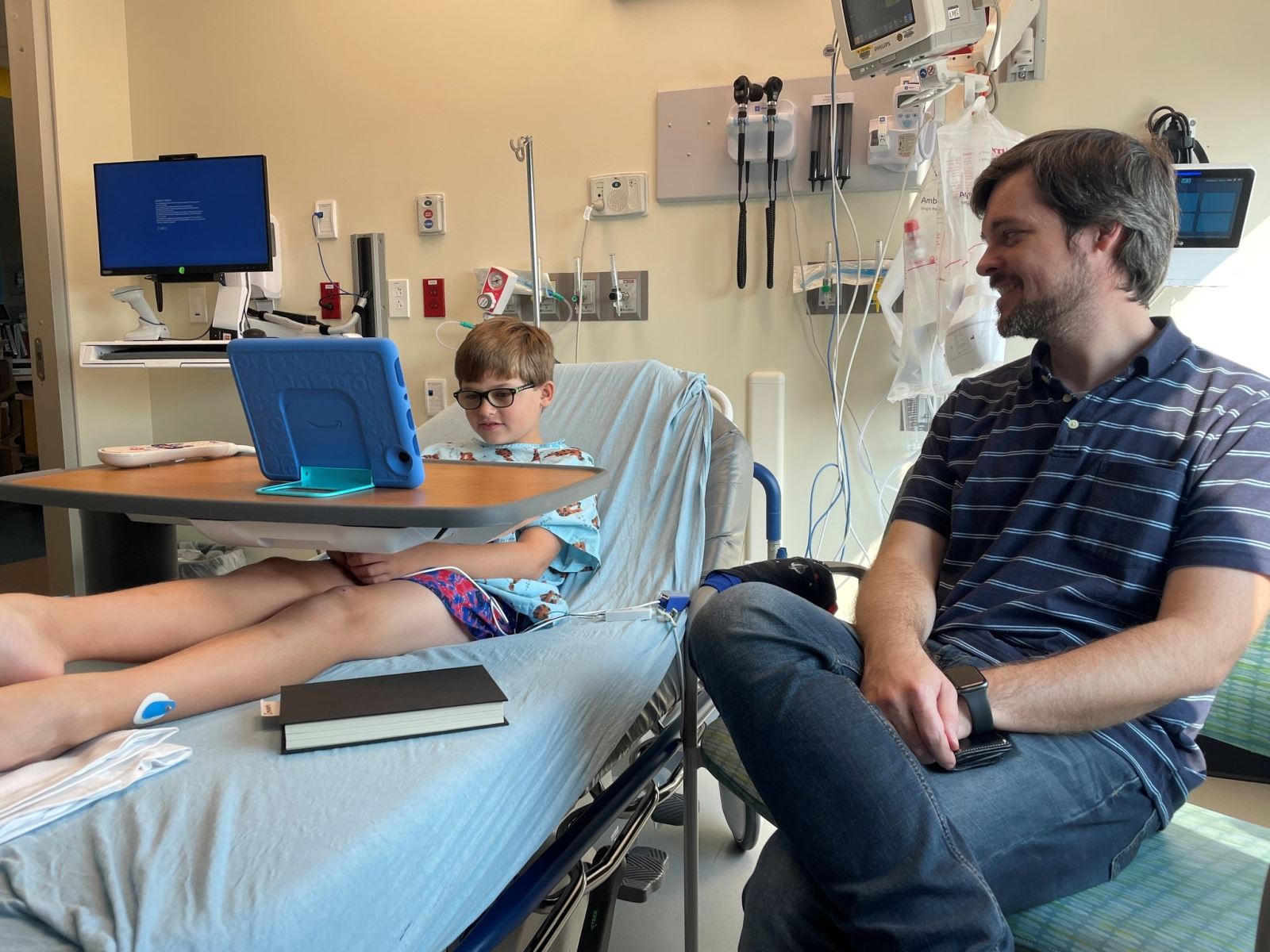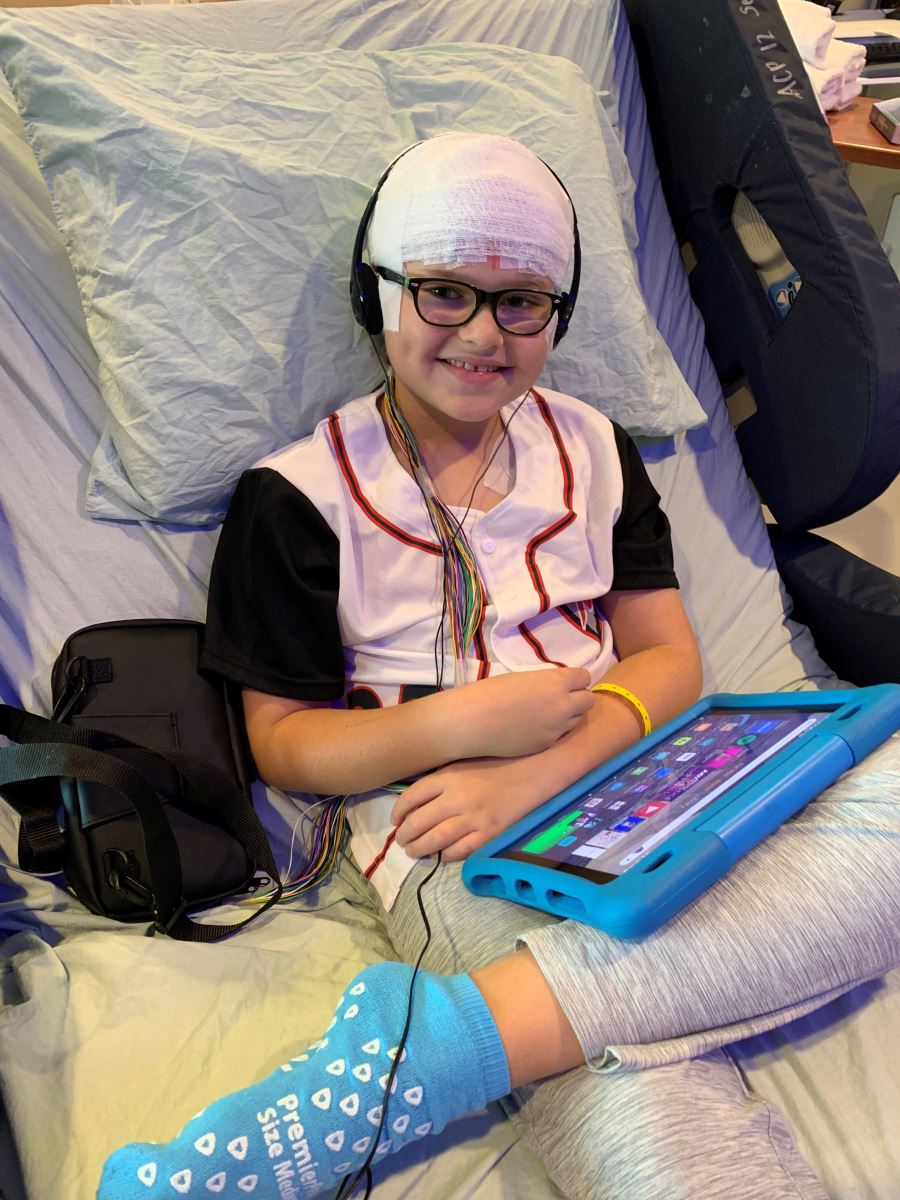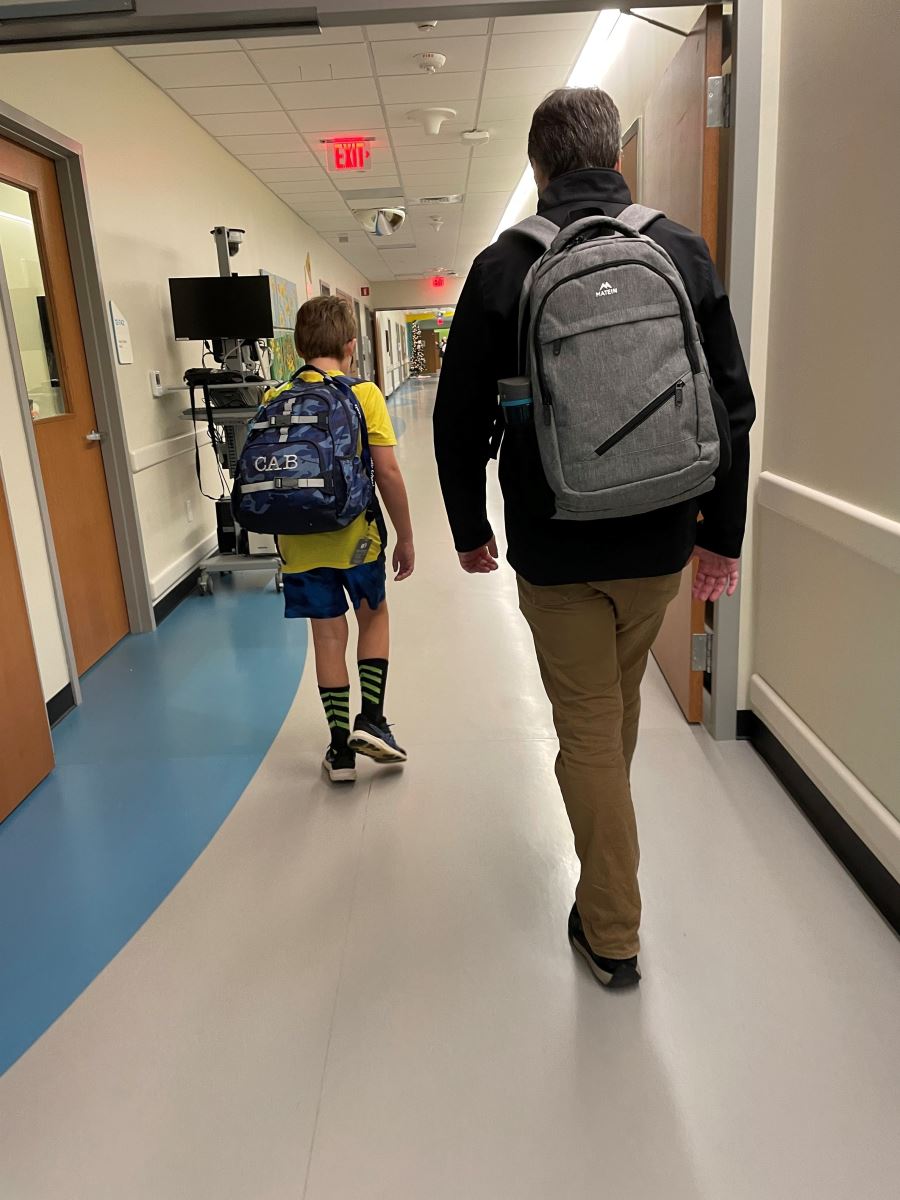
The search for answers about the 11-year-old’s seizures led to the discovery of a genetic condition he shares with his mom, his little brother and multiple other relatives
It was a normal Friday morning in June 2023. Connor Brady had just turned 9 and the biggest things on his mind were coding, computers and an upcoming trip to the beach. That morning, he was playing video games with his brother when his dad, Matt, came downstairs and noticed Connor acting strangely.
“I was chatting with them and all of a sudden Connor sort of had this odd turning of his body,” Matt said. “He wasn't responding to me, and he sort of twisted and gestured in an odd way, and then the convulsions began. It was apparent that he was having a seizure event of some sort.”
Before that moment, Connor had been a completely healthy kid.
“Until then, no history of anything like this in any of us,” Matt said. “So a huge shock and something that just really felt surreal at the time.”
Connor’s mom called 911 and he was rushed to the emergency department at CHoR. The seizure had ended after a few minutes, but it was determined that more testing was needed to find out what caused Connor’s seizure so he was referred to our neurology department.
Diagnosing the cause of Connor’s seizures
The first step was to perform an EEG, or electroencephalogram, to measure electrical activity in the brain. Nurse practitioner Ashley Perry told the family that sometimes, because the test only lasts 20 minutes, it’s difficult to learn anything from it, but it’s a first step before patients are required to do a 24-hour EEG. But in Connor’s case, they got answers pretty quickly.
“He had a lot of epileptic activity in his brainwaves,” Matt said. “So, it was pretty clear immediately, once we got to this neurology appointment, that there was something happening.”
Hospitals can be scary for kids, especially when they have to undergo a series of tests to determine what’s causing a condition, but Connor said it wasn’t as scary as it could have been for him because of the reassurance he got from his nurse practitioner.
“I wasn’t too afraid because Ashley talked to me in a way that made it seem like everything was going to be okay,” Connor said. “She made it so we could go on our beach trip a few weeks later without having to worry at all. They gave me a rescue medication and encouraged me to have fun.”
The next step in the process was to schedule an MRI to make sure there was no physical issue with Connor’s brain. But MRIs can cause anxiety for patients of all ages. At CHoR, child life explains everything that will happen. Connor’s mom, Jenny, said that was a gamechanger.
“The MRI, in particular, was one of our first experiences where I just felt so lucky to be at CHoR,” Jenny said. “Because before the appointment, child life came in, they had a model of an MRI machine to go over with Connor and explained what was going to happen. It played the sounds of the MRI so he could just be really comfortable with what it was going to be like, and I was able to go in the room with him.”
After the MRI came back clear and an additional EEG study was done, the epilepsy diagnosis was made. Now the question was - should Connor be treated with medicine to prevent another seizure? Or should the family wait and see what happens? The Brady family chose to start medication.
Treating Connor’s epilepsy
Because every patient can react differently to each medication, it took a few months to find one that didn’t impact Connor’s mood or disrupt his life too much. It was during a time when the medications were switched that Connor started having breakthrough seizures. That’s when his care team and his family decided to have Connor undergo a study in our Epilepsy Monitoring Unit over several nights.
After being released from the EMU, he had a series of three seizures in the same day, returned to the ED and was admitted for further testing and medication. That was a tough week for the whole family.
“To view it as a parent, obviously that’s one of the scariest things for us. A seizure is something that’s maybe not the rarest thing in the world, as far as medical conditions go, but it is one of the scariest to witness,” said Matt. “As parents it was very hard to see any of them, but then to have multiple in a day was especially difficult.”
His wife Jenny completely agreed.
“When we were in the ED, the doctor, [Frank Petruzella, chief, Division of Pediatric Emergency Medicine] said as much to us,” Jenny shared. “That after years and even knowing that the seizure itself is not that dangerous, he still feels like it’s one of the scariest things for parents to see.”
And even though it was a scary week for everyone involved, that was the last time Connor had a seizure. His team found the right medicine to control his seizures and allow him to focus on other things. Now instead of worrying about his health, he’s learning golf, having fun with friends and getting ready to start playing in his middle school band in the fall.
“Life is completely normal,” Connor said. “If there is a difference, I can’t remember what it was.”
Genetic testing leads to an unexpected and unrelated diagnosis
While trying to pinpoint the cause of Connor’s seizures and determining which medication would work best for him, Ashley recommended genetic testing, hoping it could provide some much-needed answers.
It was determined genetics didn’t play a role in Connor’s epilepsy, but he did screen positive for long QT syndrome, a heart rhythm disorder that can cause erratic heartbeats and even sudden cardiac arrest. Oftentimes, cardiac arrest is the first symptom.
After meeting with Dr. John Phillips, director of pediatric electrophysiology in our cardiology department, Connor was prescribed medication to prevent any issues. Since the condition is hereditary, other family members underwent testing. That’s when they learned that both Jenny and Connor’s little brother, Owen, have the same condition, as well as Jenny’s mom, brother and niece. Jenny said that Dr. Phillips was key in helping every impacted member of the family get the help they needed.
“That's very positive, but obviously it's been a change for the whole group, and getting everybody connected with cardiologists and getting them medicated if they need to be,” said Jenny. “Dr. Phillips helped us with that, because it's rare enough that it was challenging for different family members to get tested, to find doctors who understood what they were asking for and to find who they needed to see once they did test positive. He even gave us recommendations in different cities and different states.”
No stranger to CHoR’s mission
Connor’s dad is very familiar with the impact CHoR has on the community and the children who need our team’s medical expertise. He has been working for Children’s Hospital Foundation since 2008, long before he had kids of his own. As vice president for communications and donor relations, he has shared many stories of families who received life-changing care here. But when the need hit so close to home, the experience was eye-opening.
“I appreciate playing whatever my small part is in that story,” Matt said. “To not only make things better for Connor and for us, but for all the kids like Connor, and all the parents like us, who are going through the same challenges.” He continued, “To realize over the course of all those years that I've worked at CHF, how many different areas the community has supported that really helped us. That was really meaningful.”
Connor learned something new too.
“I understand what my dad does now more than I did before,” Connor said. “I appreciate fundraising a lot more now that I better understand what it is going towards. I’ve enjoyed getting to give some of my own money to other causes too, like the American Heart Association.”
Sharing his experience and helping others
Now that Connor has dealt with his own health challenges, he is more aware of just how many other kids are facing medical issues and how he can help them.
“I’ve always loved little kids, but I think my experience has made me more interested in getting to know the kids with special needs at my school,” Connor shared. “I volunteered to be an aide in the Little Feet Meet this year, which is a field day organized by the Special Olympics for kids with special needs to have fun.” He went on to say, “I’ve also noticed more people who have medical needs and conditions and realized how common it is.”
But Connor hasn’t just shared his time and his money. He has also shared his first-hand knowledge to ease the mind of others who find themselves in a similar situation.
“When my aunt had a seizure for the first time while we were at her house,” he shared, “I told my cousins that she was going to be okay and I knew because it had happened to me.”
